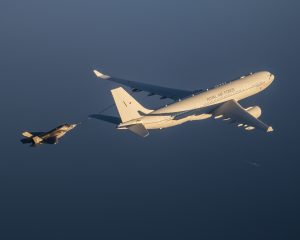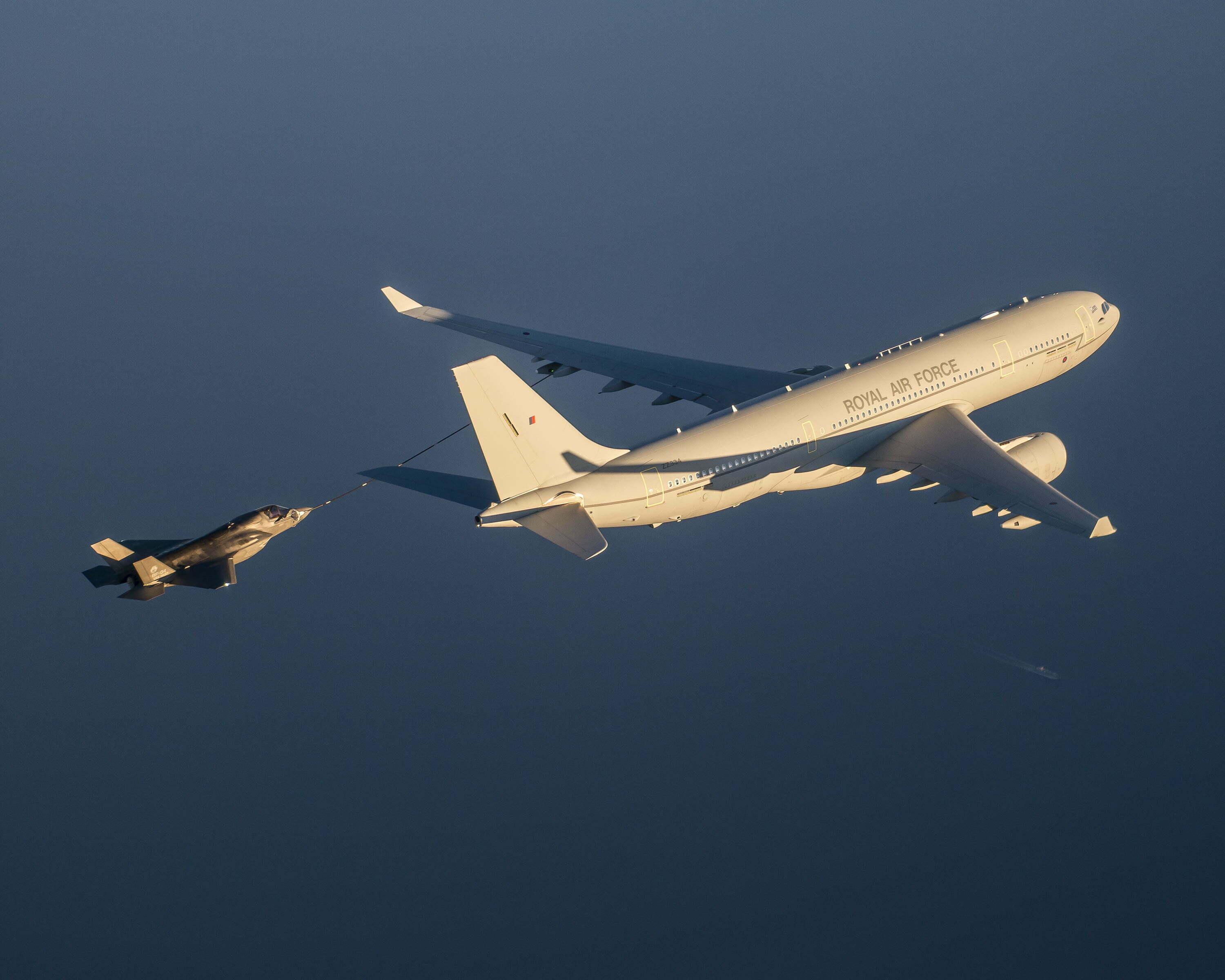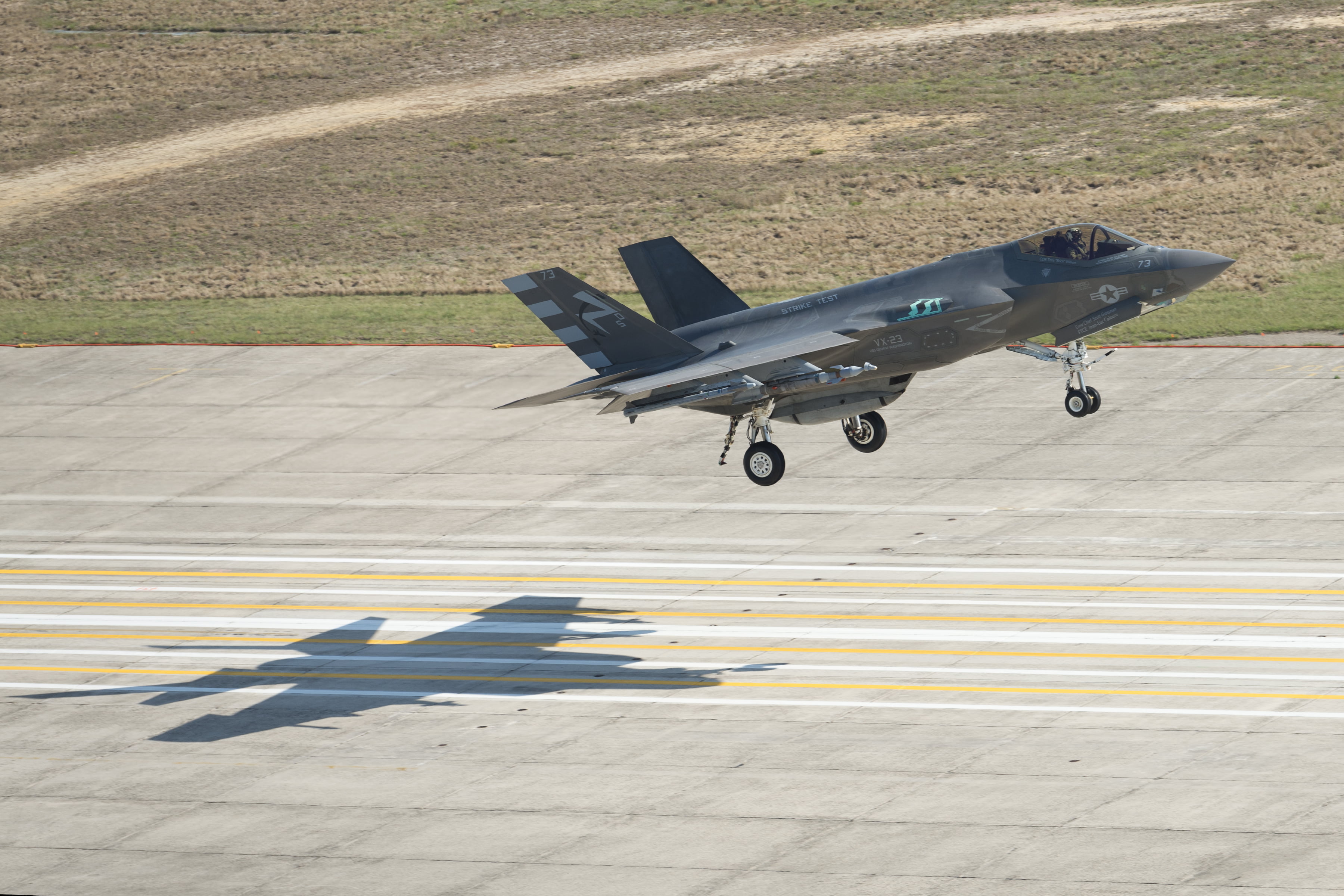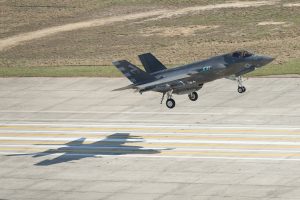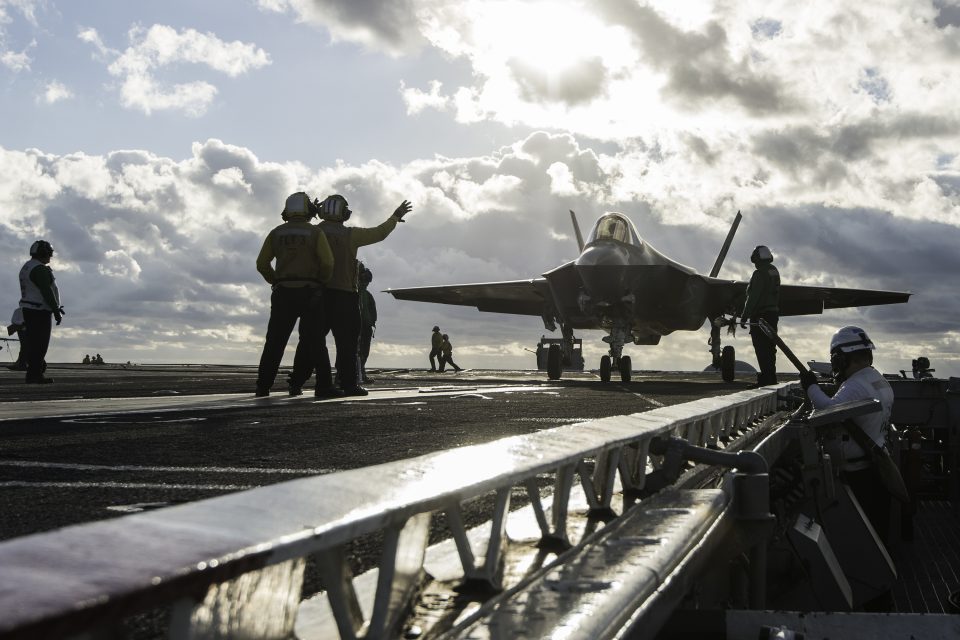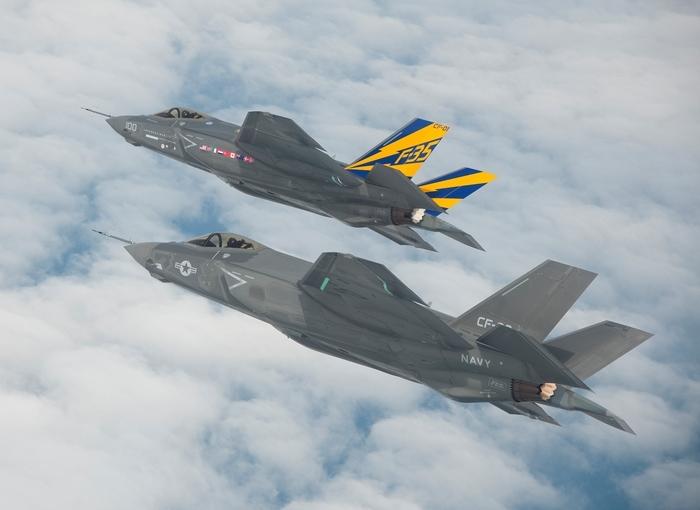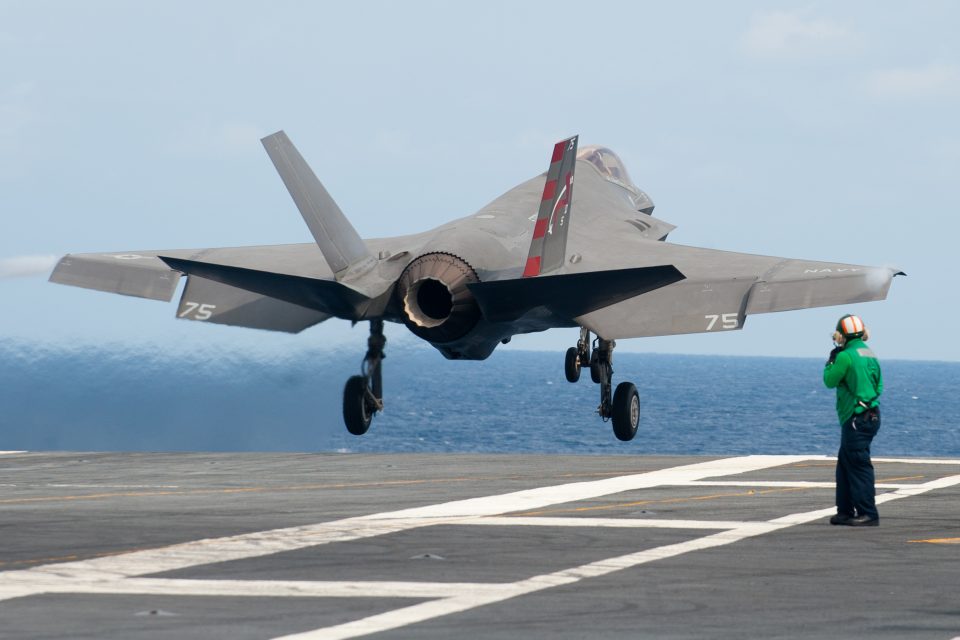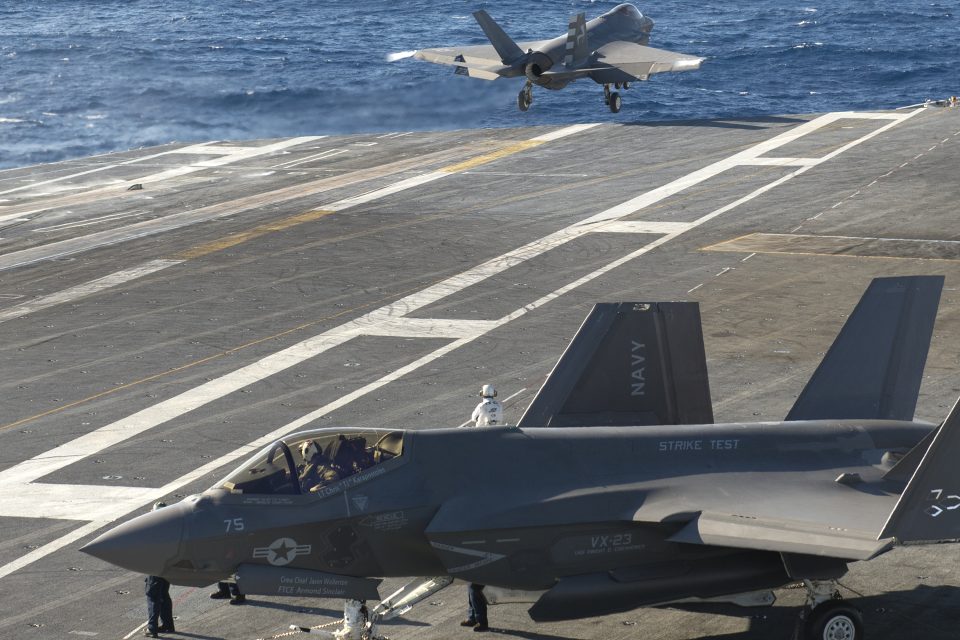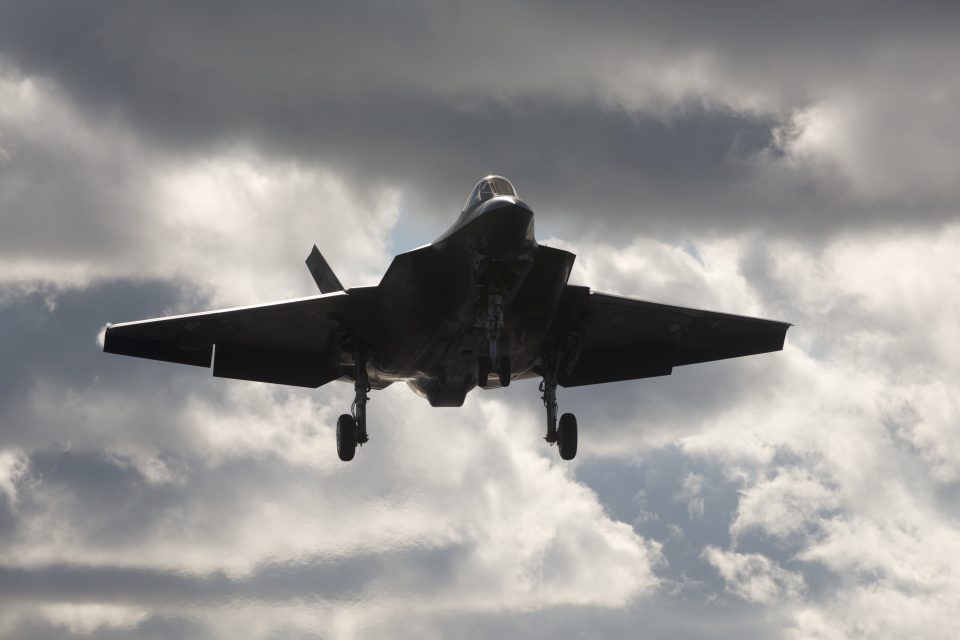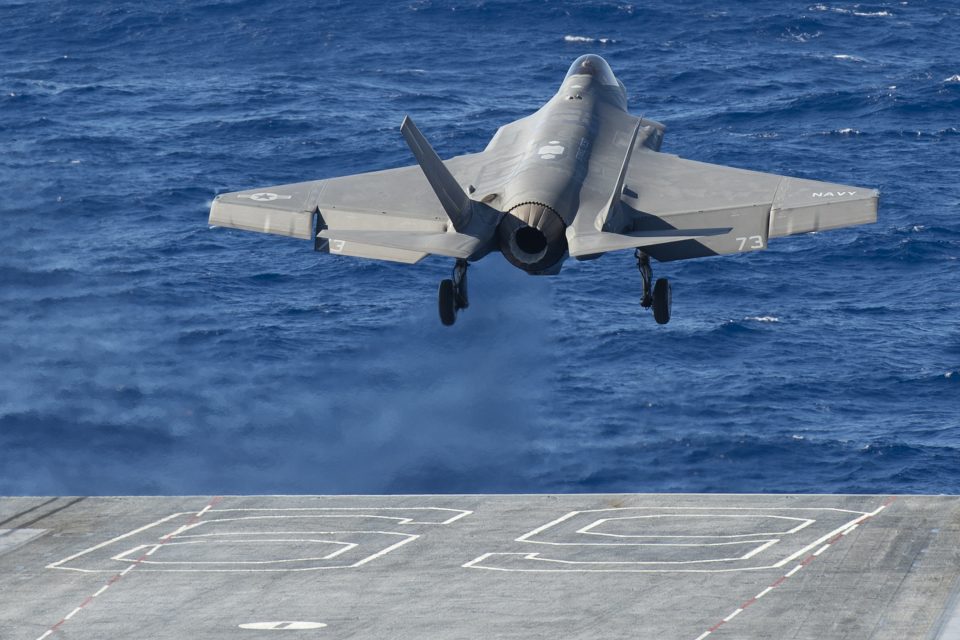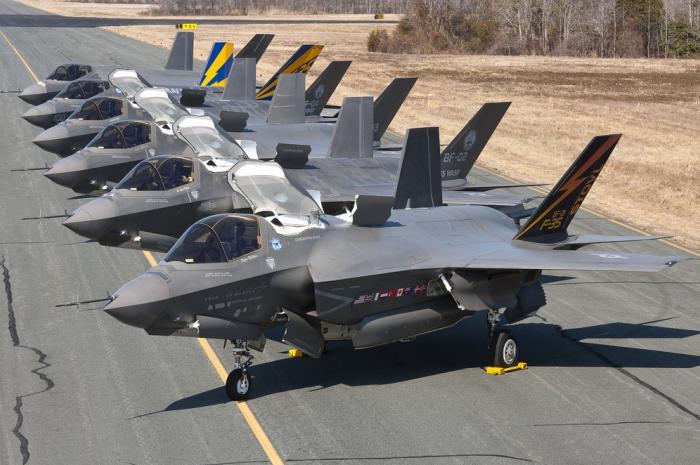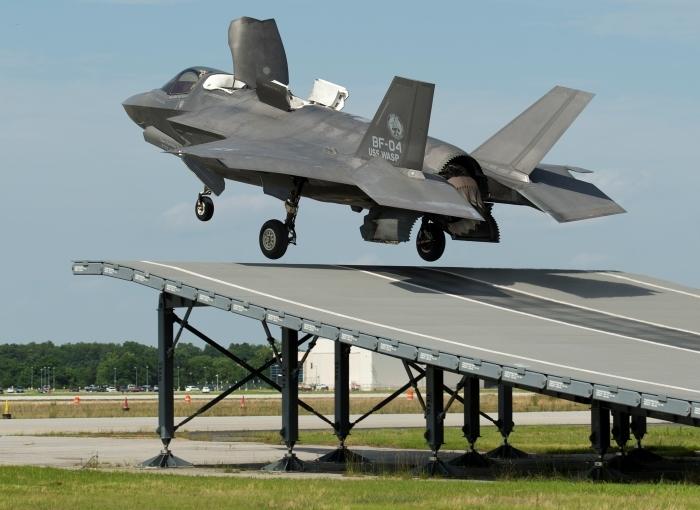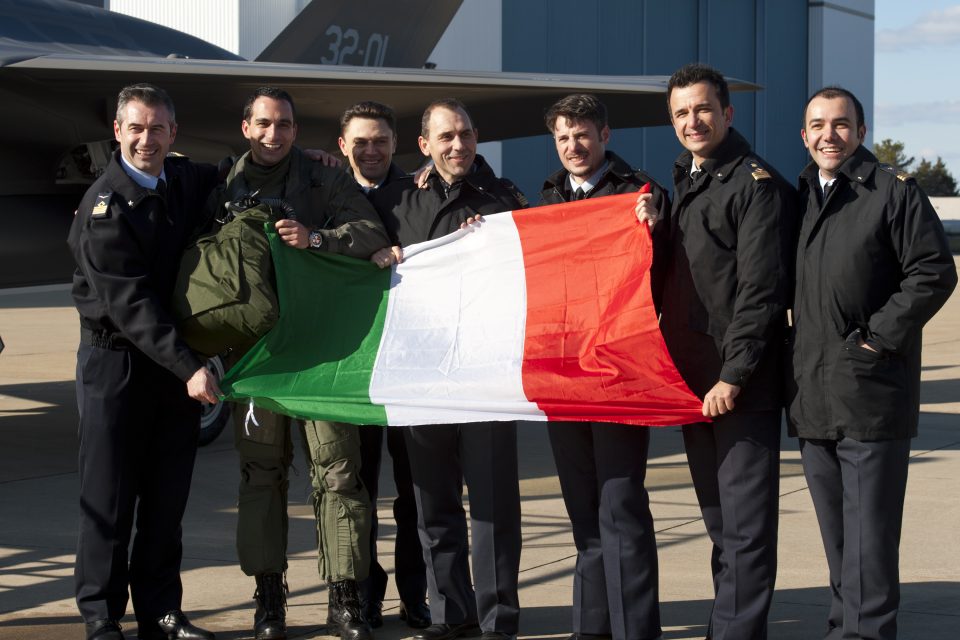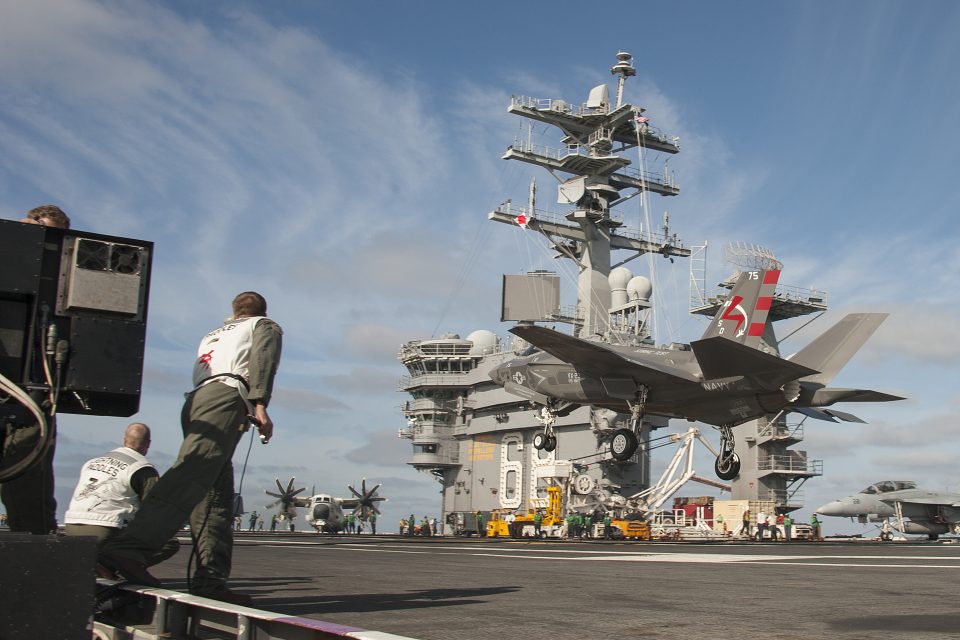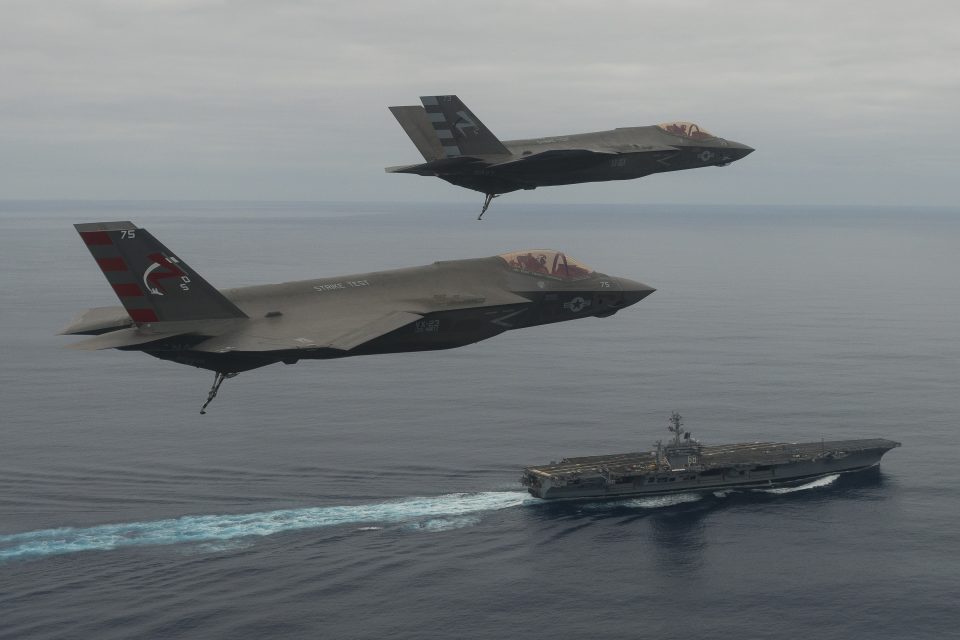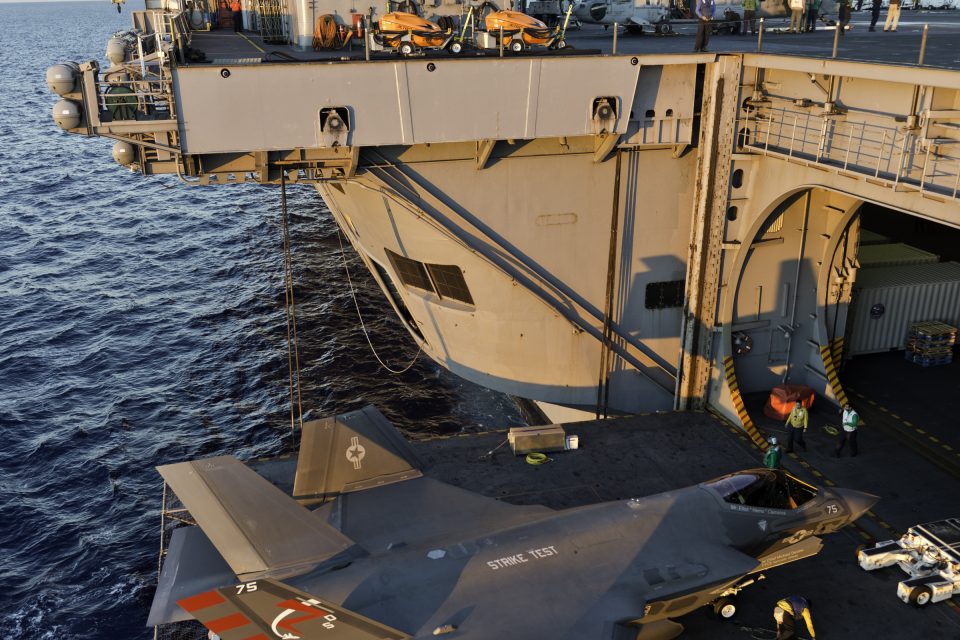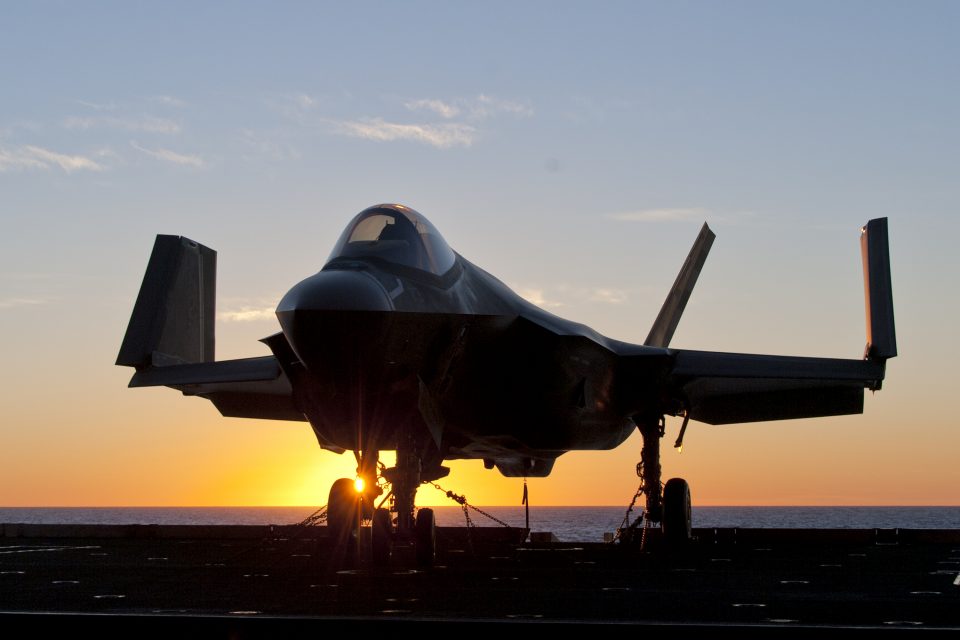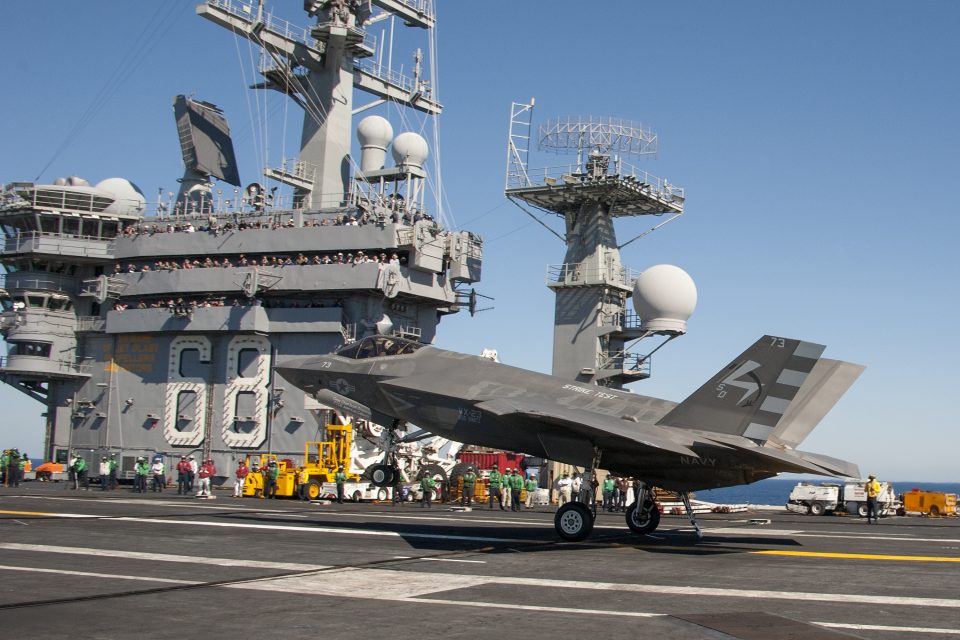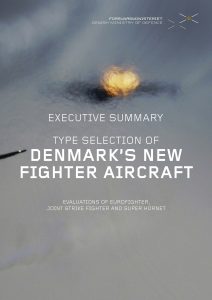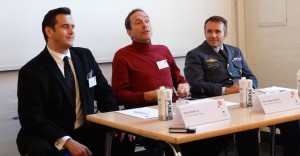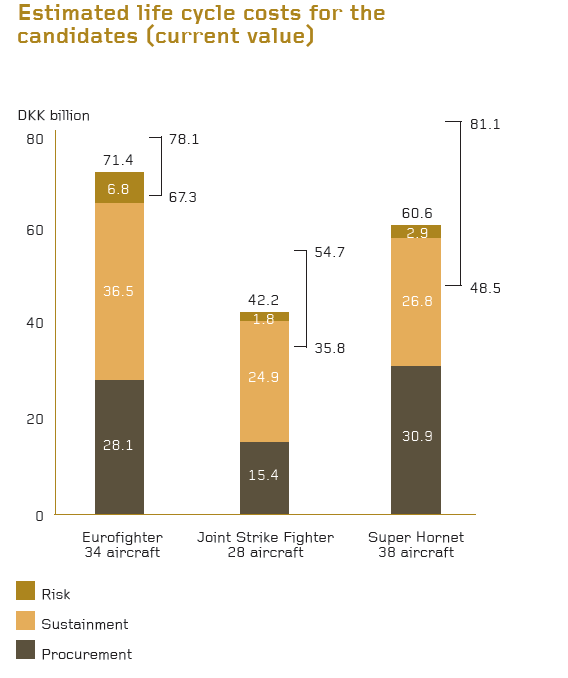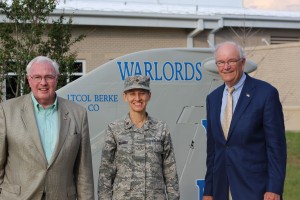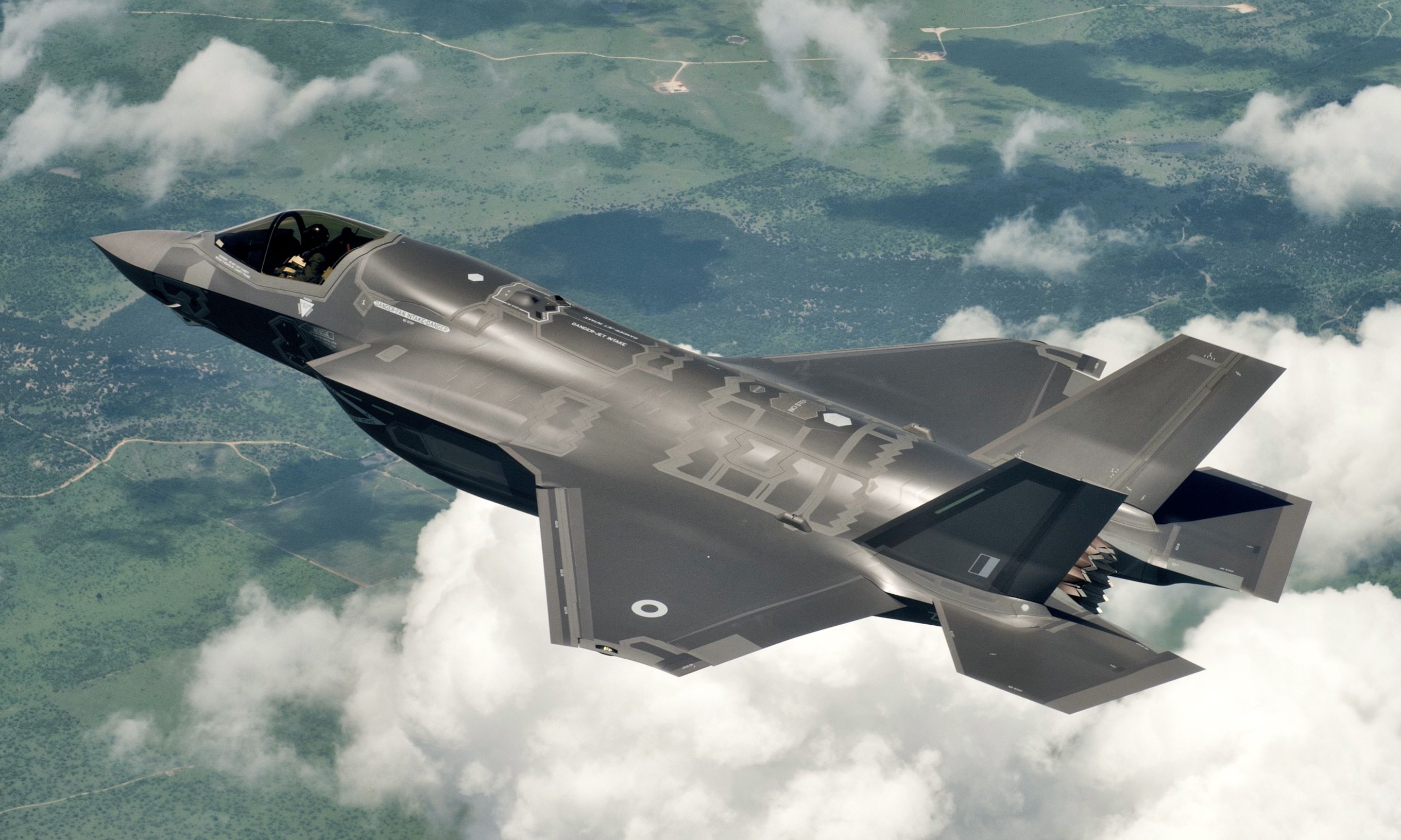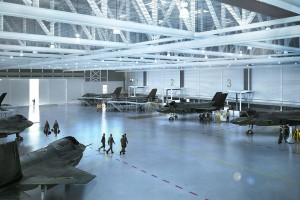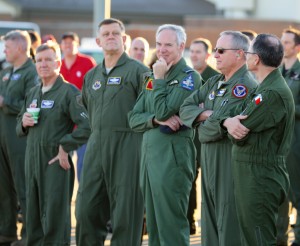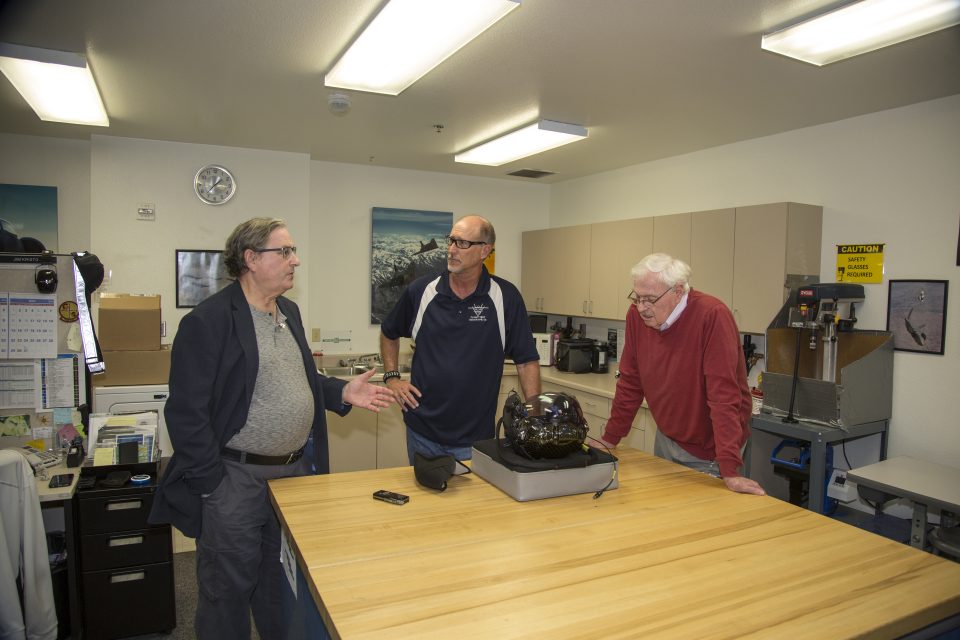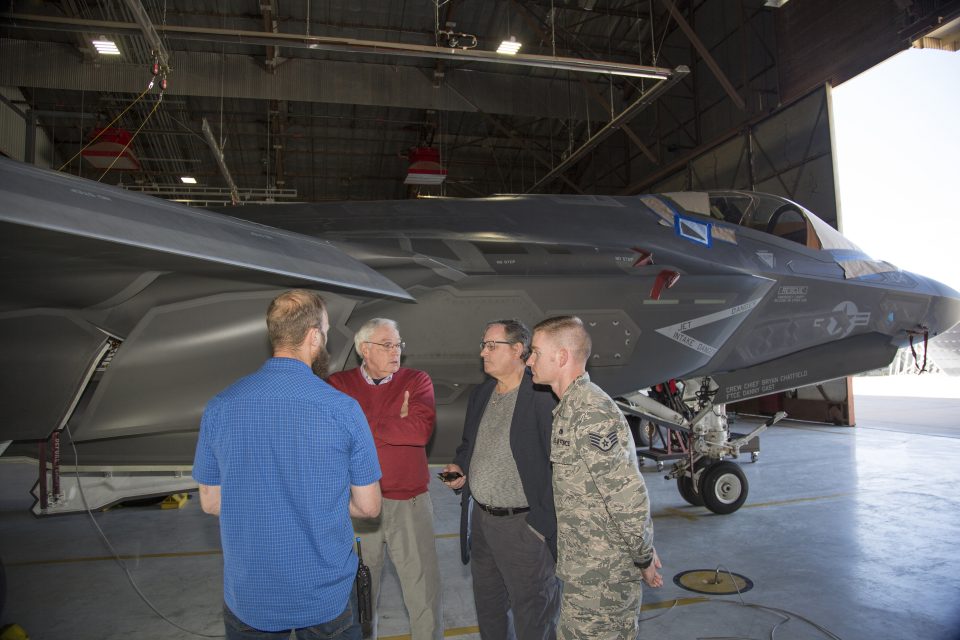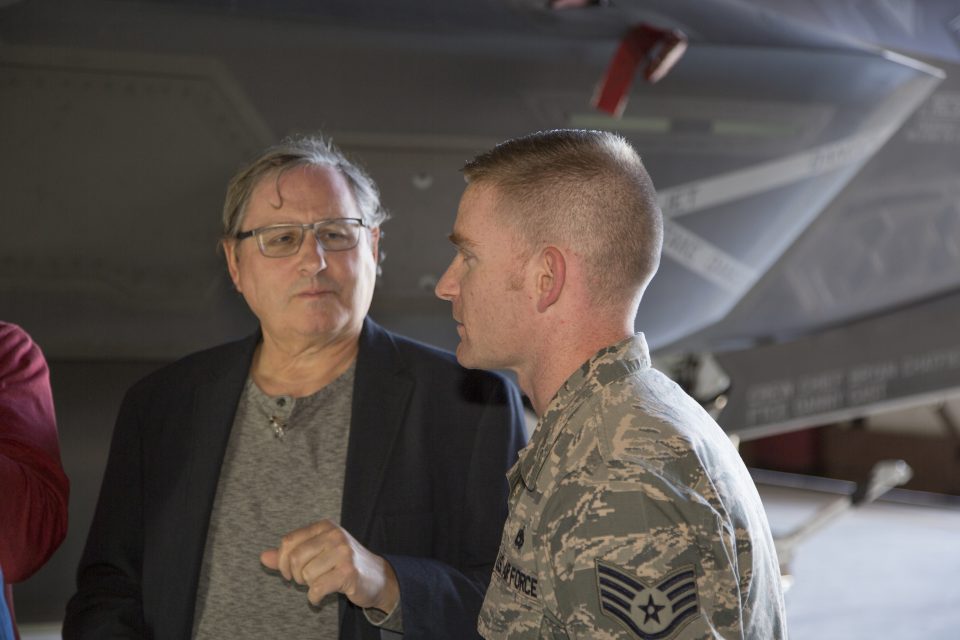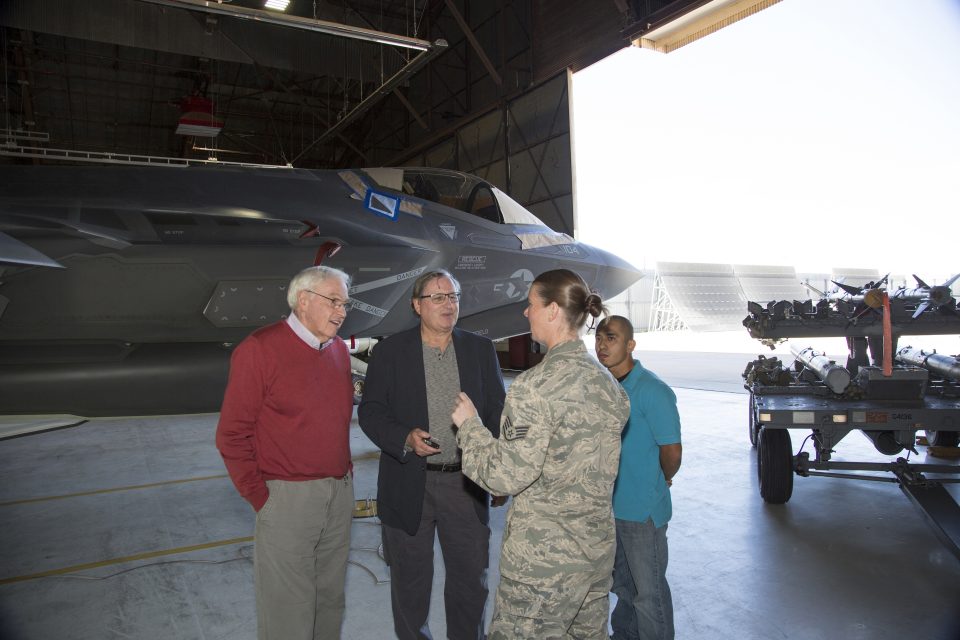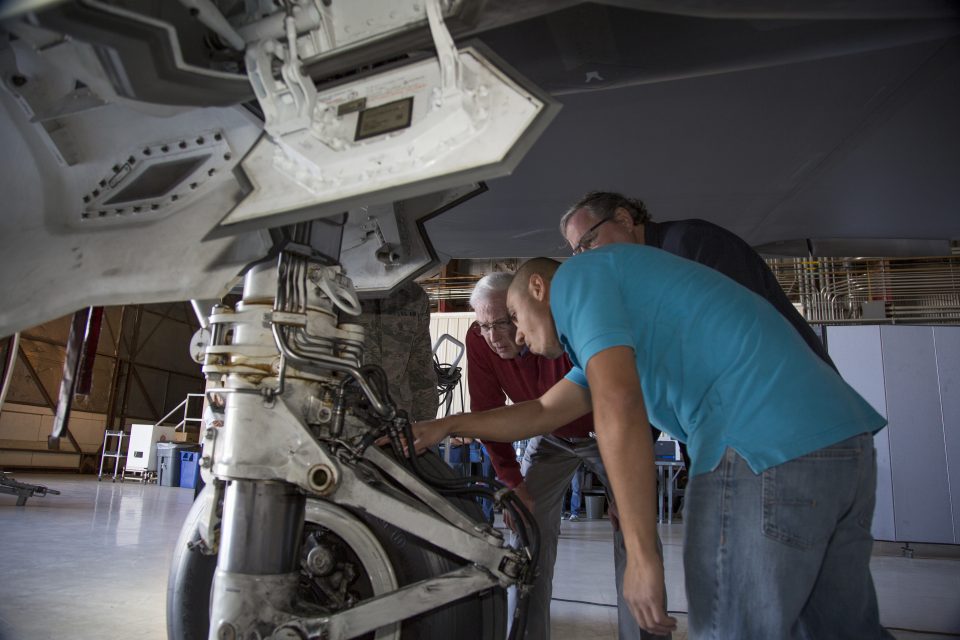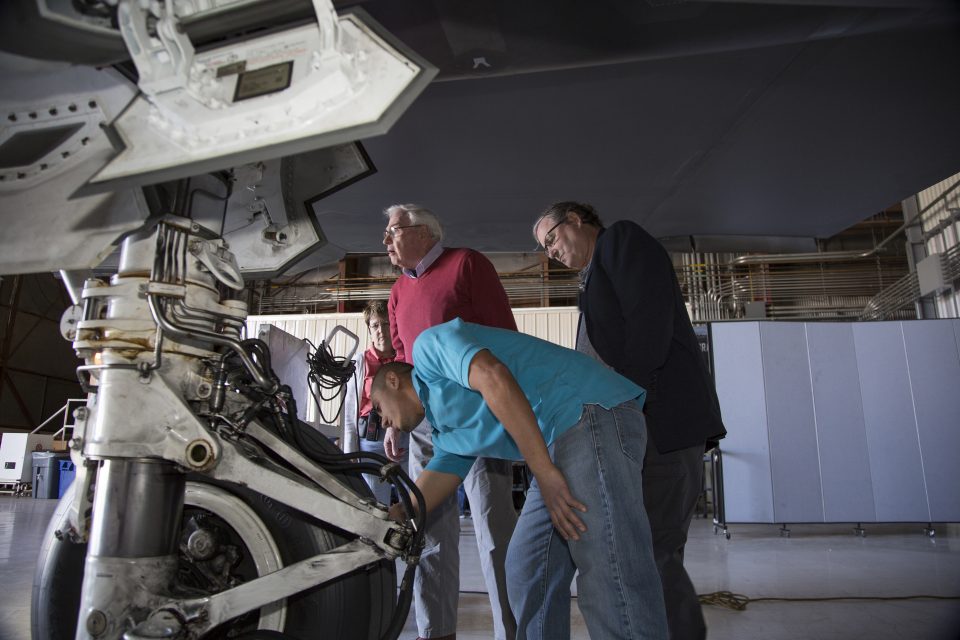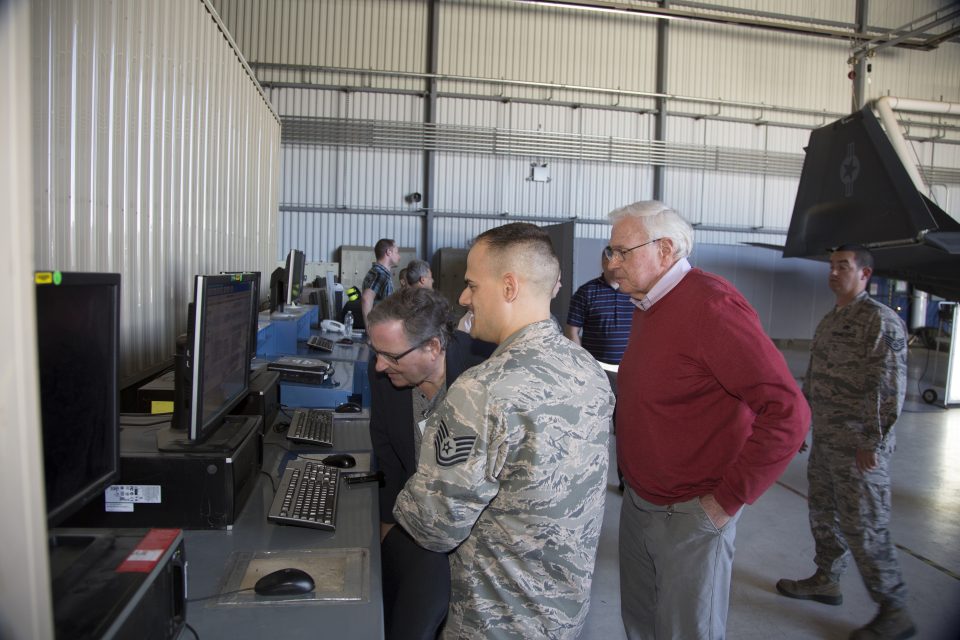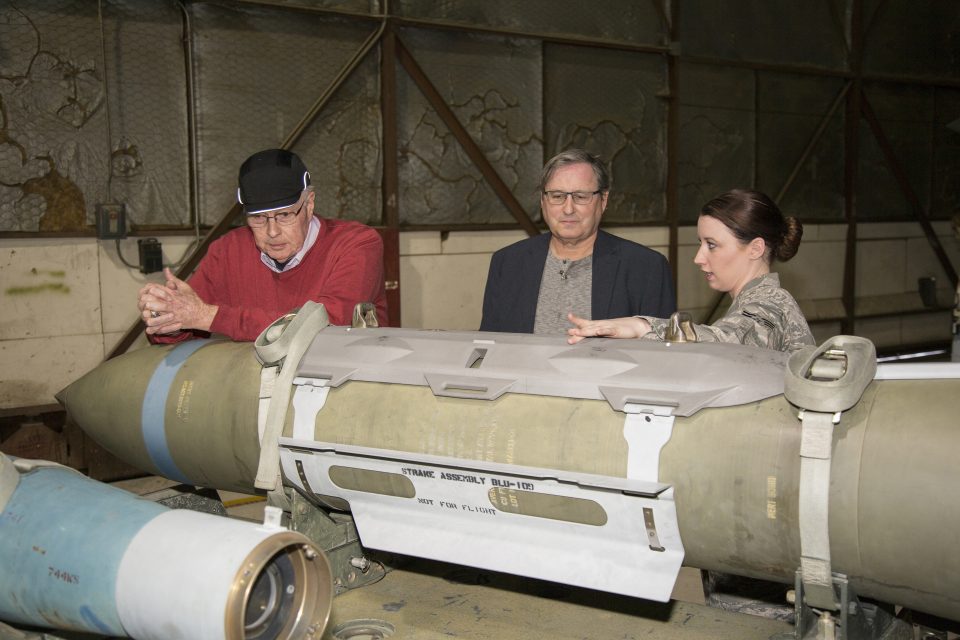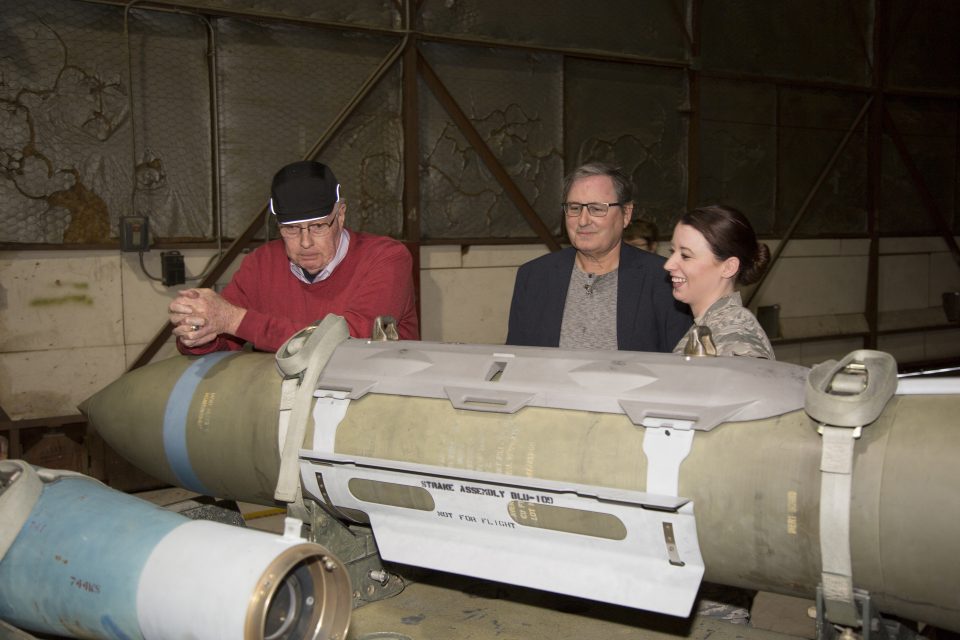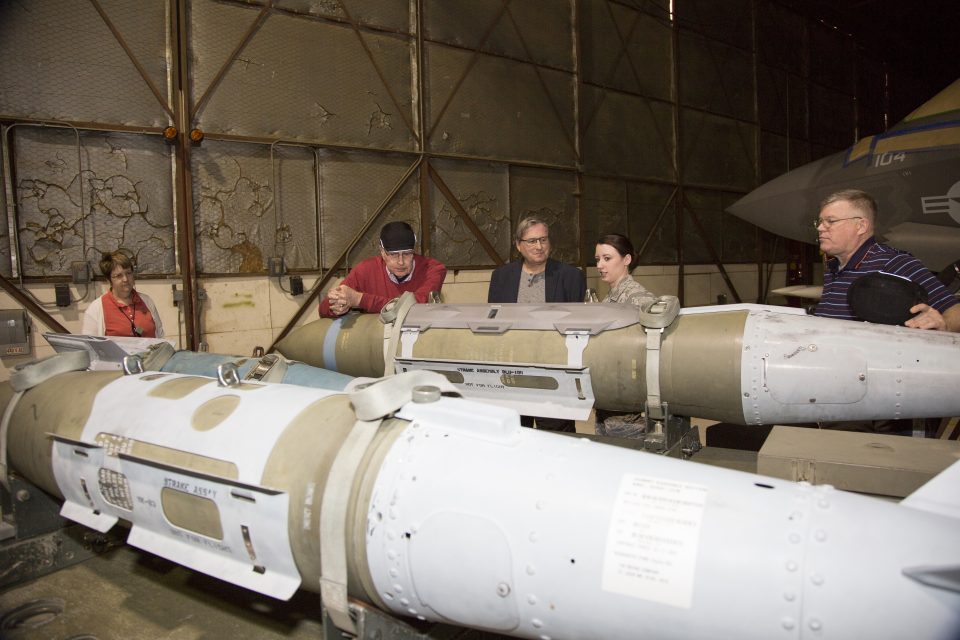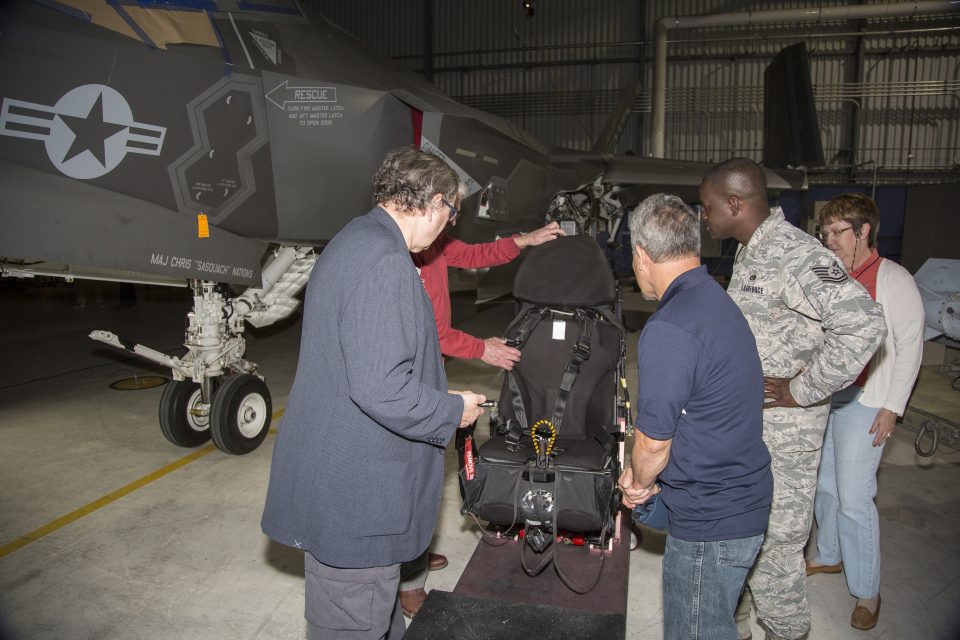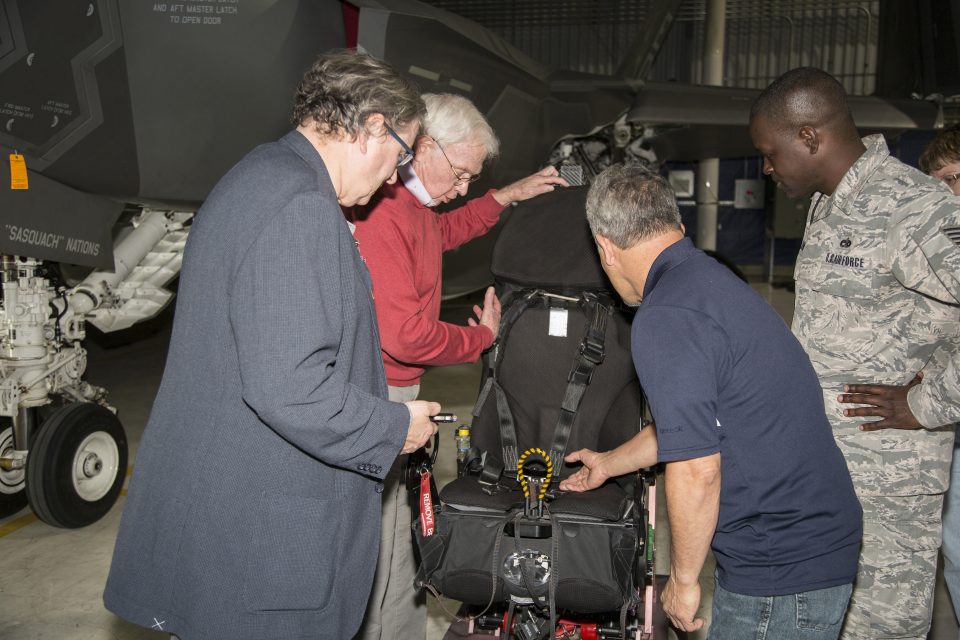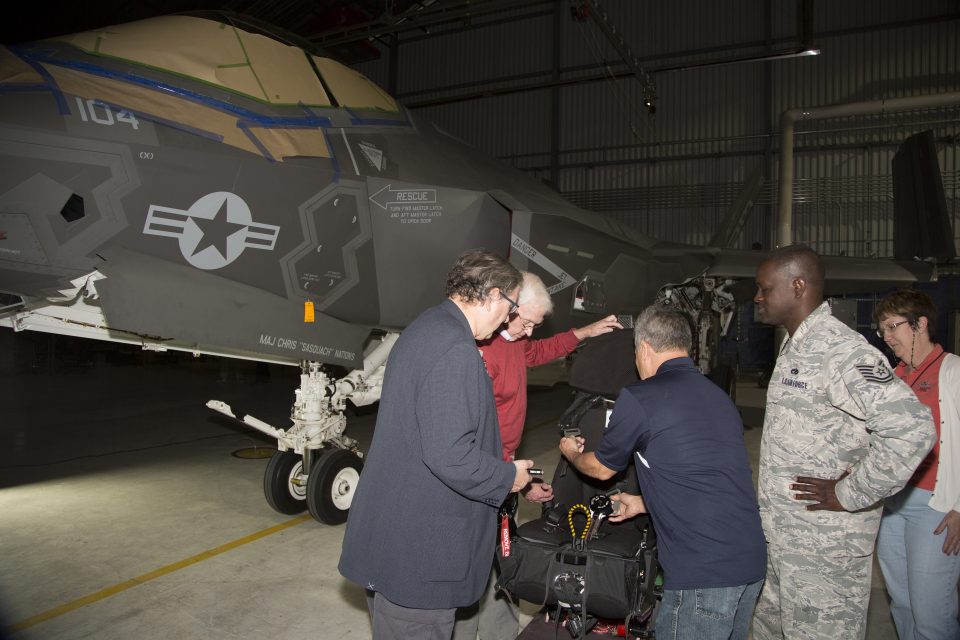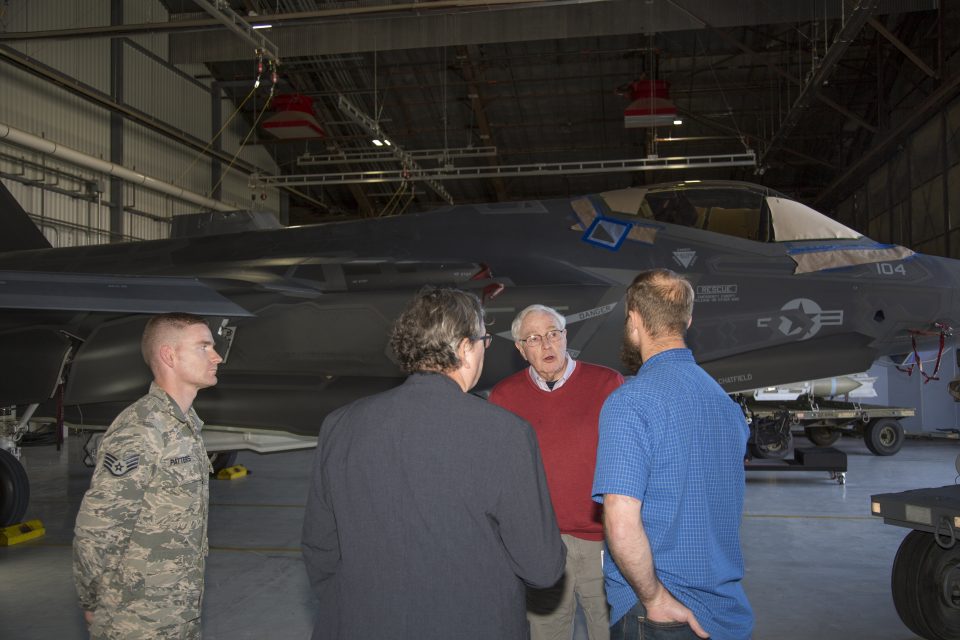2016-04-06 By Robbin Laird and Ed Timperlake
During the OT-2 aboard the USS Wasp, a young British maintainer made a simple point about the F-35: Lt. Cdr. Kitchen from the Royal Navy commented during a round table aboard the Wasp in May 2015:
“The F-35 can be surrounded by myth and legend. But it is a real testimony to the capabilities of the maintainers of the Royal Navy, the Royal Air Force and the USMC to adapt to the new technological challenges.
Their knowledge of aircraft systems is now being applied to a new air system and taking steps forward into the unknown. It is a testament to the professionalism of these maintainers that they are just getting on with the job of making this aircraft work.
Every single person involved in this detachment is passionate about this aircraft and not just because it is a sexy looking aircraft but want to see it working in every operational environment.”
https://www.sldinfo.com/aboard-the-uss-wasp-participants-in-operational-testing-provide-a-progress-report/
That perspective certainly was reflected in meetings which we had with maintainers for the Developmental Test Team at Edwards AFB. Indeed, what you could see was a very dedicated team of young maintainers from the USAF along with contractors working to shape a way ahead with regard to the maintenance of the F-35 as a global fleet.
With the “myth and legend” comment in mind, the vast literature on the failings of the ALIS or Automated Logistics Information System largely misses the point. This is a foundational system for doing maintenance differently; and the foundation will be built upon to shape over the decade ahead a capable system to manage a global fleet.
The day we visited an F-35C was in the bay on which the maintainers were working. Let us ponder that point. We were at a USAF base and they were maintaining a Navy aircraft.
Mary Parker, Deputy for Logistics for the Developmental test team, explained the difference between the DT and OT sides of the house at Edwards.
“We are a Developmental Test Group, which means we have a Flight Test Control Engineer (FTCE) for every flight and an engineering pool, in addition to the maintainers who collectively work the Health Reporting Codes (HRCs) through to the Anomaly Fault Resolution System (AFRS). We are in the business of shaping a more effective maintenance product in terms of health monitoring data accuracy.
In contrast, the Operational Test Group or an Operational Test Squadron, has a Crew Chief in charge that knows the complete aircraft and he works the problems within his team. As the Crew Chief encounters problems he needs assistance with, he’ll submit an Action Request (AR) through ALIS to receive information to reach a resolution for the problem. ”
The plane talks to the maintainers; the computer brick is pulled from the plane after a flight and the mission as well as maintenance data is plugged into the IT management systems.
This is now; this is today.
The maintainers plugged in their information as they do the maintenance rather than entering paper trails into an IT system at a later date. There is a complete digital history of the aircraft, who maintained it, what they did and when they do it.
This is now; this is today.
One can go to the ALIS system and see that aircraft and its condition from a maintenance situation and when it goes to depot, the complete accurate digital history is part of what the depot can then work with, and their work in turn, will go into the digital system as well for the line maintainers to have direct access to.
This is now; this is today.
What is a work in progress is taking that information and building squadron and fleet records which can provide a global picture of the fleet. But without the foundation, which has already been built and is operational today, a global picture and system would not even be imaginable.
This will take time, because the data needs to be built, and flow into the system, with the system itself being adjusted to the operational realities, which will become available over time.
It takes a decade for a new combat aircraft and its combat team to gain enough operational experiences to really know what that aircraft can do under global combat conditions.
The F-35 will be no different.
https://www.sldinfo.com/airpower-in-contested-air-space-highlights-from-the-trilateral-combat-exercise/
But what will be different is that the F-35 is global from birth, and global information generated from the beginning.
And as the global fleet deploys information for areas as far from one another as Australia to Norway will input real world operational data into a global maintenance system.
And the data generated will provide significant inputs as well to the manufacturing process and the redesign of parts as those parts are tested in operations.
This is a digitally based combat learning cycle within which maintenance is built in as an integral part.
It sounds simple; but it has never been done before.
When visiting the maintainers at Edwards, it is clear that these young people know they are part of something new and something exciting.
As Lt. Col. Chari put it with regard to the effort:
“Really now is like NASA must have been like in 1969; it is a once in a generation thing to get IOC on a new generation aircraft, and the excitement around here is palpable. You are going to talk about this experience for the rest of your life, being present at the creation and evolution of F-35 combat capability.”
This is true not just for the pilots but clearly for the maintainers as well; and it is an air combat system operated by an air combat team.
Our host for the tour was Mary Parker, Deputy for Logistics for the Developmental Test Team.
We discussed maintenance and operational support practices and systems with Staff Sgt. Cody Patters, Crew Chief, R.J Veron, AF-3s Aircraft Supervisor, Staff Sgt. Rachel Simmons, Avionics Technician, Mr. Jesus Rivera, Avionics Technician, TSgt Jeremy Jackson, Mr. Rusty Phillips, Weapons Expeditor, Senior Airman Jessica Meehan, Weapons Technician, Staff Sgt. Jason Noyes, Low Observable Technician, TSgt Andrew Williams, Egress Technician, and Mr. Greg Guevara, Mechanic/Technician.
In addition, we spent time with the Life Support personnel, Mr. Jim Kristo and Ms. Jackie Williams, involved with the helmet as well and got a sense of the way ahead with that system, which obviously work (we saw that with Ninja flying the Atlantic in version 2 of the helmet and having nothing but praise for his helmet as well – not needing to turn around in flight was certainly something he mentioned after he landed at Pax River.)
It is difficult to convey the richness of what we learned during the site visit, but seeing the equipment, crawling under the jet and talking with personnel conveyed as sense of a competent team shaping a clear way ahead for the digital airplane and the fleet. By the way, there are more than 150 flying aircraft feeding data already into the ALIS system, with more than 50,000 flight hours.
Obviously, these maintainers came from legacy programs, F-16, F-15, A-10, B-1, B-2, and F-22.
We asked all of them what their expectations were when they came to the program, and they ranged from excitement, to an expectation of complete discontinuity, to in one case concern that his plane was being replaced.
But across the board, the comment was that the plane was much easier to maintain than their legacy aircraft, but it was “different” because it is a digital system.
There was also the comment that changes that they would have like to see in their legacy aircraft were anticipated and built into the F-35 program.
In this sense, although a digital aircraft, many of the changes built into the program are built upon what came before and changes which maintainers wanted to see.
When it came to a major shift from the current USAF IMDS or Integrated Maintenance Data System to the ALIS or Autonomic Logistics Information System, the Crew Chief explained that the new system incorporated a number of changes which his generation of maintainers thought was needed to IMDS but done in an integrated manner.
In his view, systems are like children which go through growth cycles, and that “ALIS is in its Toddler phase.” Even in its Toddler phase, the digital maintenance system was remaking the way ahead with regard to 21st century maintenance approaches. The foundation was solid and the integration of what had been disparate maintenance systems was a key advantage of the system.
It is a point of entry system, and he had already seen gains in accuracy of input in information. The integrated system makes it easier as well for the new maintainer to operate at a higher standard than a newbie on a legacy aircraft.
“With the IMDS, experienced maintainers have a number of ‘cheat books’ they developed to navigate to whatever screen number you need to find the information which you need for a particular task. ALIS presents the data much differently and you can get rid of your old ‘cheat books’.”
But you have to learn the system; it is different.
“If you bring a legacy mindset to this and think in IMDS terms, you will not get it. You need to enter a more integrated digital workspace and learn how it works. Then you not only get it, but you can find ways to improve the experience and pass on your recommendations which can be later incorporated into the ongoing revisions of the system.”
Put in simple terms, the maintainer is facing culture change, and the maintainers at Edwards are part of the Cultural Revolution associated with bringing into service a digital aircraft.
What was being put in place, according to the crew chief, was “smarter maintenance.
The USAF is getting smaller; we are expecting more from less people and this kind of maintenance system is crucial to get there.”
The experience we had at Edwards reminded us of the comments made by Col. Seymour, one of the pioneers in bringing Osprey into the USMC, about the challenge of cultural change with regard to maintaining the Osprey.
https://www.sldinfo.com/the-price-of-success-can-the-osprey-be-effectively-globally-sustained/
“A key challenge is to let the maintainers know they are not stakeholders but Marines. For example, I had a gunny sergeant who said he preferred CH-46s to Ospreys. “He said that I’m a 46 guy.” I looked him in the face and said, “Well, you’re in the wrong unit, gunny. There are no 46 that’s left here on the East Coast. You want me to get your orders to Okinawa, because, you know, that’s the only place for flying 46s.”
I told him that you don’t get a vote. This is not a democracy. Conway decided. McCorkle decided. Hagee decided. Amos decided, you know, we’re going to fly the Osprey. It is what it is, so either embrace it or leave.”
He then underscored where that Gunny is now in terms of working the Osprey. “The same gunny now will brag about being, the gunny who fixed problem X, Y, or Z in the maintenance department on a V-22. He owns it now. It’s like okay, you know, it worked, it’s normalized if you will, and that’s why you see this, this growing success. Success begets success internal to the Marine Corps culture.”
We saw the same approach and the same attitude at Edwards – get on with it and make the new plane, and the new maintenance culture the new norm, rather than trying to think in terms of the last century’s approach.
With regard to avionics or mission systems maintenance, the maintainers talked about how they used the screens in the cockpit similar to how Major General Silveria had discussed how the pilots do: they configure the screens to the task and to support their work flow to get the outcomes they need to get to.
“The cockpit gives us easy access through the multi-function displays and touch screens to the information about the mission systems. We can modify the screens to do the maintenance task required. The screens make ergonomic sense and are easy to work with to shape the work approach to get the job done.”
With regard to weapons and weapons loading, we learned that a major step ahead was that the training weapons did not need to be armed at the end of the runway with a specialized team of weapons loaders.
The weapons for the F-35 can be loaded onto the aircraft, over the various weapon stations on the aircraft, and armed by the pilot in the cockpit. The airplane can load as much as 18,000 pounds of ordinance on the A and C models, and 16,000 on the B model. For example, the plane will carry 8 small diameter bombs, in a 4 plus 4 configuration inside the A and C models.
With regard to Low Observable Maintenance, the F-35 is radically different from earlier stealth coated planes, for it is built into the aircraft, and is maintained as such.
The maintainers took us through the steps of how to maintain LO on the aircraft, and then took us to the ALIS system to show us the LO page for the particular F-35C which was in the hanger that day.
The ALIS screen showed everywhere on the aircraft that repairs had been made, what repairs had been made and by whom and on what date.
By a process of external examination of the airframe after a fight, the maintainers and then the crew chief do a visual examination to determine if a repair is needed.
They then go to the ALIS system and bring up the needed repair and trace the repair from the screen and then take it to the airframe to guide the repair process.
In the various ALIS discussions, the point was highlighted that because of the accurate data built around each aircraft in the squadron and the squadron itself, it would possible to build out fleet knowledge over time, as the flight time and operational experiences get built into the fleet.
This would include understanding of things like weapons and LO maintenance because they are integrated as well into the ALIS system.
We learned many other things of interest as well, such as the fact that the tool crib to support maintenance for the F-35 contains the same amount of tools to maintain all three variants, as those necessary to maintain a single legacy aircraft, such as the F-15.
We learned that several legacy systems had been designed out of the F-35 making the maintenance process easier, more rapid and more accurate. A key example was that the actuators did not leak hydraulic fluid and you did not need a MULE to be put in place to maintain a complex hydraulic system on the F-35 – it used self-contained reservoirs on the actuators themselves.
One maintainer highlighted that because the plane talked with you, you could work with the data in the computer to work on the systems rather than having to power up the aircraft, to get the information necessary to shape your work process.
“The plane will show you on the screen what is wrong with it. You do not have to have the jet on to hear what is wrong. This will clearly help newbies from the beginning be better maintainers.”
Another aspect was the management of health indication codes (i.e. HRCs).
“With legacy aircraft, you would get the codes and then have to go look them up. The F-35 gives you the codes and what they are in the same process. This accelerates your ability to get on with the maintenance cycle.”
Tires are one of the few items built-up in the backshops which remain on an F-35 maintenance line. Each variant uses a different tire for the obvious reason that each is designed for a different operational environment.
“We do use largely the same procedures for all three variants for tire replacement and to date we are seeing normal wear and tear on F-35 tires comparable to legacy aircraft.”
A Marine Corps maintainer on the team had come from the Harrier.
“Many of the changes we wanted to see on Harrier maintenance have been incorporated into the F-35.”
We also had briefings on the seats and the helmet, and given Ed Timperlake’s experience of having had to bail out of a two-engine jet on fire, he was impressed with the progress on the seat to facilitate safe ejection.
When we visited the Life Support technician, we learned that he had come from the USN and was a parachute technician, which created an instant bond between a Marine Corps pilot whose life was saved by a Navy parachutist technician’s accurate work!
The helmet is form fitted to the pilot for it is crucial to have the symbology of the cockpit projected directly in front of the pilot’s eyes. “But it is of course not bolted into the head of the pilot and can move around which may require him to adjust in flight as needed.”
In short, the “right stuff” is not just in the air; it is on the ground as well.
And as the pilot in the air owns his aircraft in combat; the crew chief and his team on the ground own their aircraft to get it combat ready.
And at Edwards they are part of the team preparing the way for a digital age information warfare “flying combat system.”
Editor’s Note: The slideshow highlight photos during the visit with maintainers during the Edwards AFB visit and are credited to Lockheed Martin.
